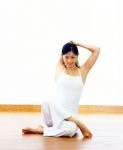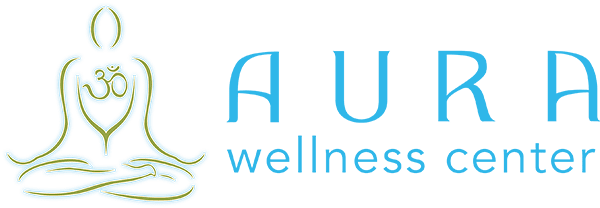 By Dr. Paul Jerard, E-RYT 500, YACEP
By Dr. Paul Jerard, E-RYT 500, YACEP
For many new teachers and interns, designing a Hatha Yoga class presents some fun and challenges. It allows the teacher to embrace his or her own creativity, instead of copying the techniques used in a template. Designing a lesson plan creates a teacher who discovers why and how to substitute a technique, modify for conditions, and make students comfortable. Let us look at some ways to group techniques within a Yoga class, and keep them interesting for each session.
Flexible Thoughts
Please keep in mind that there are thousands of ways to design lesson plans. The only time a lesson plan is wrong is if it can potentially hurt a student. Granted, we want a balanced lesson plan of forward, back, right, left, and twisting movements. However, as teachers, we must constantly adjust for student health conditions and that overrides what we want. Below is a generalized view of designing a Hatha Yoga class.
Centering
This is a time for students to bring their full awareness into the classroom. If I were to compare Yoga to any other discipline, this is similar to the ceremonial bow at the beginning of a martial arts class. Some teachers go into a brief meditation, at this point, while other teachers may focus on seated or standing breath awareness. The point is – there are many ways to approach this, but time should be taken for the centering because Yoga is not an “exercise” class.
Warm-Ups
This might consist of circular movements, which are commonly seen in Kundalini Yoga and some Hatha classes. The slow circular movements create a flow of energy within your core. At the same time, they warm up your joints, create flexibility within the muscles, and massage your vital organs. Some Yoga styles practice Sun Salutations (Surya Namaskar) instead of the circular warm-ups. This is completely acceptable, as long as the initial flows are performed slowly and gradually increase in speed. By gradually increasing the speed, we want to keep in mind that this is warm-up time and time spent preparing to avoid injury.
Pranayama
There seems to be a debate on when to perform pranayama during class time. We should be practicing pranayama throughout the class, even when we are practicing other techniques. For example – if your students were practicing Sun Salutations, they should have also been practicing Ujjayi breath at the same time.
When to Practice Pranayama
Some teachers guide students through pranayama at the beginning, middle, or end of the class – as a separate segment. Personally, I see nothing wrong with this. In my classes, pranayama is usually taught as integration throughout the lesson plan. For example – you could open, or close, a class with Udgeeth pranayama while teaching other Yogic breathing techniques throughout the class.
Asanas
There are many ways to approach asanas. Some Yoga teachers start from a seated position, go to Table Poses, and then standing, and so on. Here is a contemporary template for grouping asanas in a typical Hatha class:
Standing Poses
Balancing Poses
Seated Poses
Kneeling Poses
Table (All Fours) Poses
Prone Poses
Supine Poses
About Grouping
This is just a sample guideline. There are many ways to approach asana sequencing. If this were a private session, for a student with a neurological disorder, the entire lesson plan would have to be customized to meet the needs of that student. The above-mentioned lesson plan did not take into account teachers who organize Vinyasa Yoga classes, which continuously flow through all of these groups of asanas, within their flow sequences.
Meditation
This is a special time, during classes, that can be performed at the beginning, end, or at the beginning and the end of a class. In other words, there is no “bad” time for meditation. If you survey your students, and they answer you honestly, you will find that most of them do not make time for meditation during the week.
Relaxation
Sometimes, Yoga instructors run two relaxation segments, in a single class. For example, a class might begin and end in Savasana. Sometimes, teachers offer guided relaxation at the beginning of class. Most often, guided relaxations are performed at the end of class, or just before the last meditation session, which is near the end of the class.
Types of Relaxation
There are a variety of relaxation methods. The classic method seems to be stage-by-stage relaxation, but body scanning has also become very popular, and it does not take as much time. This may be important if you are trying to schedule time. There is also the relaxation-through-visualization method – where the teacher guides the student through a mental exercise, with the focus being on one thought, or object, at a time, in that sequence.
About Visualization
With all that said – relaxation through visualization existed in Yantra Yoga for centuries before some of the popular methods of this time. If you want to research Yantra Yoga, it would be wise to seek out a competent Guru, who is familiar with the many methods of that discipline.
Food for Thought
Hatha Yoga is much like music, in that careful creativity can be a good thing. It is a matter of preference, as to whether the Yoga teacher or student likes a particular sequence. This does not make it right or wrong, but any methods taught from other branches of Yoga should be carefully studied under the guidance of a competent Yoga teacher from within that style.
© Copyright – Aura Wellness Center – Publications Division
To see our selection of Yoga teacher training and continuing education courses, please visit the following link.
https://aurawellnesscenter.com/store/
Related Resources
by Leslie Kaminoff and Amy Matthews
52 Essential Principles of Yoga Philosophy to Deepen your Practice
by Rina Jakubowicz.
A Relaxing Way to De-stress, Re-energize, and Find Balance
by: Gail Boorstein Grossman.
YOGA: THE PATH TO HOLISTIC HEALTH
by B.K.S. Iyengar
TEACHING YOGA: Essential Foundations and Techniques
By Mark Stephens

Hi There, What books would you suggest reading to help at teacher sequence her yoga classes or better plan them? Namaste Lynne
Hi Lynne, Here is a book that touches on this subject: Yoga Sequencing: Designing Transformative Yoga Classes
I, also , would like to know the “best” way to sequence . I fine, that, for me it depends on my class. I sometimes have younger more experienced, and then again, at other times, I have older people. Altho all have or are going thru the journey of cancer wellness, each are at a different place . I have come to think, that there is no set way to sequence—that perhaps it depends on the person, their body and how they feel that day. I would like to learn more.
Also, what would you say is the difference between sequence and Vinyasa or flow – seems they all have to do with breath with movement.
Thank you
Hi Paul, Great article, I have sent it to my teacher trainees. In both the teacher training programs I took – one with Sivananda and one with Esther Myers Yoga Studio in Toronto, we did relaxation at both the beginning and the end. One of the teachers who teaches for me comes from a very different background, teaching Vinyasa Yoga; she also does a relaxation beginning and end. I find that a relaxation at the beginning is very effective as students know they have arrived, are there for a while and can really relax. At the end students get out of their “present mind” thinking and some are already concerned about the next task on their agenda, so the final relaxation may not be as effective as the beginning one. I sometimes substitute a meditation at the end if we have done a lot of floor yoga. I hope these comments are helpful.
Hi all
I nearly always begin a class with a relaxation to allow the students to arrive and begin to look inwards at their breath.This allows them to be so focused on the breath that they will be in a constant state of awareness combining pranayama with asana. We always finish with a relaxation and sometimes meditation.
love to all
alison
Dear Lynne,
Here is a book to consider.
Yoga Sequencing: Designing Transformative Yoga Classes
Sequences are designed for a variety of purposes. Some sequences are for strength, while others may be specifically designed for a particular ailment.
If you are looking for a therapeutic reference “BKS Iyengar Yoga – The Path to Holistic Health” is a great start.
Om Shanti,
Paul
Dear Martye,
What is “the difference between sequence and Vinyasa or flow?”
A: A sequence in Hatha is a flow in Vinyasa.
A “sequence” of asanas is a generalized term. Some styles may hold an asana for an inhale, an exhale, or a number of breaths or minutes. Many Vinyasa classes perform sychronized breath, much like Surya Namaskar.
If we think in terms of the therapeutic application of Yoga sequencing. A sequence of techniques, such as pranayama, asana, relaxation, or meditation can be a Yogic prescription for a specific ailment.
OM Shanti,
Paul
Dear Rita,
The Sivananda style and Esther Myers have my deepest respect.
I have been present for multiple meditation sessions within the same class or a mix of meditation and relaxation in the same class. However, I am sure there are many combinations of techniques which are helpful.
All the best.
OM Shanti,
Paul